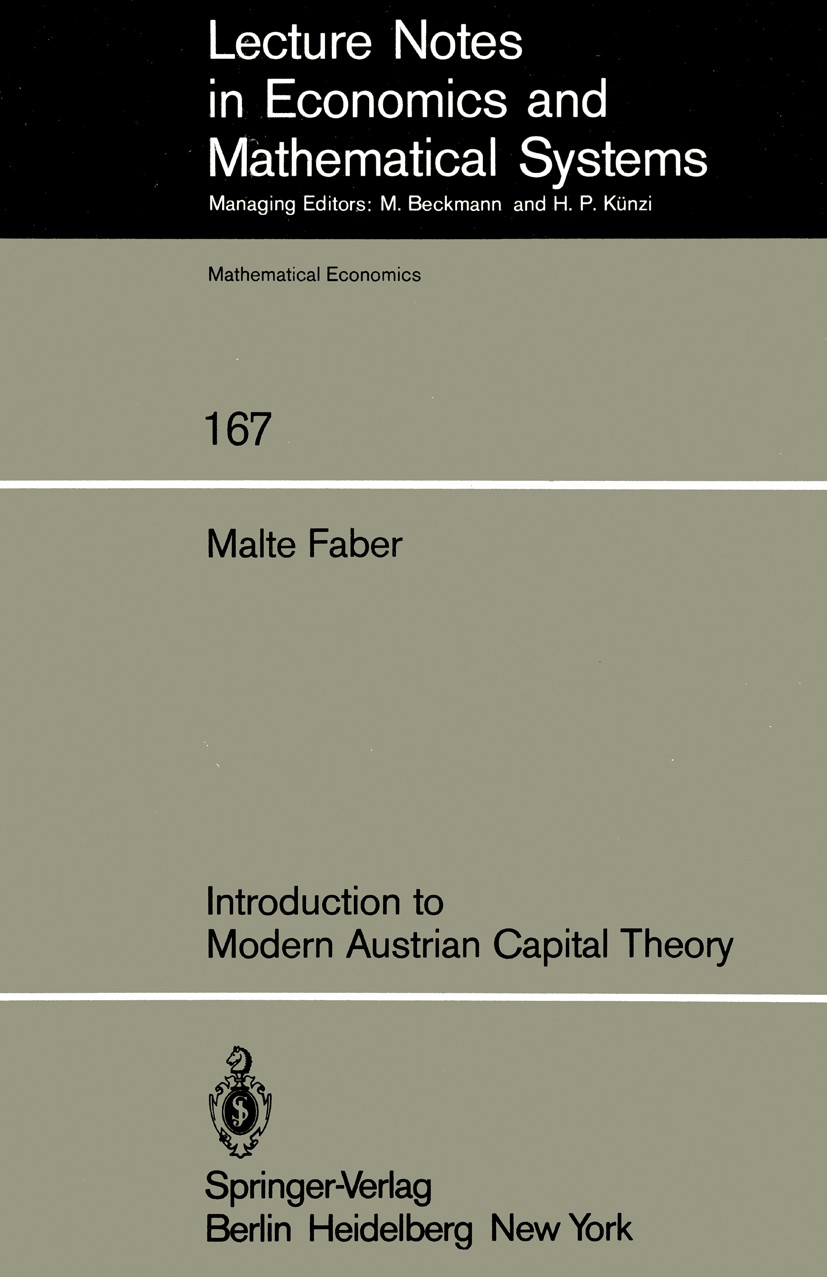| 书目名称 | Introduction to Modern Austrian Capital Theory | | 编辑 | Malte Faber | | 视频video | http://file.papertrans.cn/474/473921/473921.mp4 | | 丛书名称 | Lecture Notes in Economics and Mathematical Systems | | 图书封面 |  | | 描述 | During the fifties and the sixties the neoclassical concept of the production function was criticized in numerous papers. In particular, the aggregation of different capital goods into a single number was reprehended. A second essential disadvantage, namely the neglect of the time structure of the production process, found, however, rela tively little attention. While up to the thirties the Austrian capital theory which stressed the time aspect of production was an important school, it fell into oblivion after the great capital controversies of the thirties. It took over thirty years, i. e. till the beginning of the seventies be fore it came to a renaissance of the Austrian capital theory by var ious writers. We may roughly classify the different attempts of Hits rebirth in modern economics" into three groups: 1. The approach of ~ [1970, 1973, 1973a] has received most of the attention in the literature (Burmeister [1974], Faber [1975], Fehl [1975], ~[1975], Hagemann and ~ [1976]). It will be shown in Chapter 9 that ~ is only in so far a Neo-Austrian as he does explicitly take into consideration the vertical time structure of the production process. But he does not use the Austri | | 出版日期 | Textbook 1979 | | 关键词 | Kapital; Wachstum; economics; economy; efficiency; growth; growth model; growth theory; planned economy; prod | | 版次 | 1 | | doi | https://doi.org/10.1007/978-3-642-48310-3 | | isbn_softcover | 978-3-540-09121-9 | | isbn_ebook | 978-3-642-48310-3Series ISSN 0075-8442 Series E-ISSN 2196-9957 | | issn_series | 0075-8442 | | copyright | Springer-Verlag Berlin Heidelberg 1979 |
The information of publication is updating

|
|
 |Archiver|手机版|小黑屋|
派博传思国际
( 京公网安备110108008328)
GMT+8, 2025-11-20 00:50
|Archiver|手机版|小黑屋|
派博传思国际
( 京公网安备110108008328)
GMT+8, 2025-11-20 00:50


